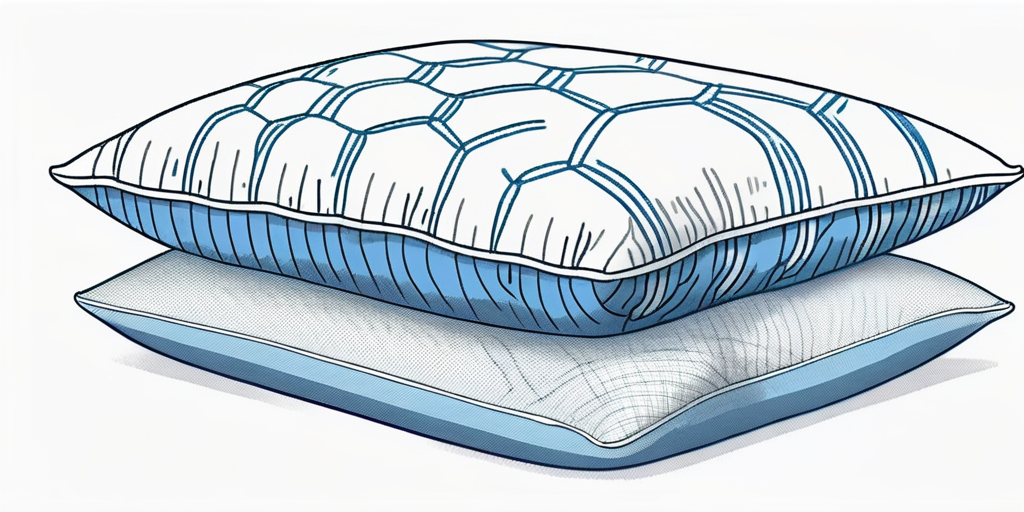Have you ever woken up in the morning with an achy back? If so, it’s time to examine your sleeping habits. Believe it or not, the way you sleep could be the cause of your back pain. In this article, we will explore the impact of different sleeping positions on back health and provide tips on achieving optimal sleep posture for back pain relief.
Understanding the Impact of Sleeping Positions on Back Health
Our sleeping position plays a crucial role in maintaining the health of our spine. When we sleep, our body must be properly aligned to prevent unnecessary strain on the back muscles and ligaments. Unfortunately, many common sleeping positions can pressure the spine, leading to discomfort and pain.
Stomach sleeping: While it may be comfortable for some, sleeping on your stomach is one of the least ideal positions for your back. It can strain the neck and lower back and pressure joints and muscles.
Back sleeping: Sleeping on your back is considered one of the best positions for spinal alignment. However, this position may not be suitable if you have an underlying condition like sleep apnea.
Side sleeping: Side sleeping is a popular choice, and it can benefit back pain sufferers. However, it’s important to maintain proper alignment by using supportive pillows and accessories.
The Pros and Cons of Side Sleeping
Side sleeping is often recommended for those with back pain. It can help relieve pressure on the spine and promote better blood flow. However, it’s not without its drawbacks. One potential problem with side sleeping is shoulder pain, especially if the mattress is too firm or the pillows are not supportive enough. Use a body pillow or pillow between your knees to align your hips and spine.
Another thing to remember when side sleeping is to avoid curling your body into a fetal position. While it may feel cozy, it can create imbalance and strain the spine. Instead, keep your body straight, with your knees slightly bent.
Optimal Sleeping Positions for Back Pain Relief
If you regularly wake up with back pain, it may be time to adjust your sleep routine. Here are some optimal sleeping positions that can help relieve back pain:
- Back sleeping with a pillow under the knees: Elevating your knees slightly with a pillow can help maintain the natural curve of your spine and reduce pressure on the lower back.
- Side sleeping with a pillow between the knees: Placing a pillow between your knees while sleeping on your side can help align your hips, pelvis, and spine, reducing strain on the lower back.
- Back sleeping with a pillow under the lower back: For those who prefer sleeping on their back, placing a pillow or rolled-up towel under the lower back can provide additional support and maintain the spine’s natural curvature.
It’s important to note that finding the right sleeping position for back pain relief may require some trial and error. What works for one person may not work for another, so listening to your body and adjusting is essential.
Adjusting your sleep environment
Additionally, it’s worth mentioning that the choice of mattress and pillow can also significantly impact back health during sleep. A mattress that is too soft or firm may not provide adequate support, leading to misalignment of the spine. Similarly, using too flat or thick pillows can also contribute to back pain.
When selecting a mattress, look for one that offers a balance of comfort and support. Memory foam mattresses are often recommended for their ability to contour to the body’s shape and provide targeted support. Additionally, consider investing in a pillow to support the neck and maintain proper spinal alignment.
Lastly, creating a sleep environment that promotes relaxation and reduces stress is essential. Keep your bedroom cool, dark, and quiet to encourage quality sleep. Avoid using electronic devices before bed, as the blue light emitted by screens can interfere with the production of melatonin, a hormone that regulates sleep.
Pillow Placement and Support: Achieving Spinal Alignment
While the right sleeping position is crucial, proper pillow placement and support are essential for maintaining spinal alignment and reducing back pain. Your pillow should provide adequate support for your head, neck, and shoulders.

When you sleep on your back, choose a pillow that is not too high or too flat. It should fill the gap between your neck and the mattress. For side sleeping, opt for a thicker pillow to support the space between your ear and shoulder. You can also use additional pillows to help other body parts, such as placing a pillow under your waist to maintain a neutral spine.
Moreover, it’s essential to consider the material of your pillow. Memory foam pillows are known for their ability to contour to the shape of your head and neck, providing personalized support. On the other hand, down pillows are soft and offer a luxurious feel but may not provide enough support for those with neck pain. Some pillows come with adjustable loft options, allowing you to customize the height and firmness to suit your preferences.
Furthermore, the position of your arms during sleep can also impact your spinal alignment. Avoid sleeping with your arms above your head to prevent shoulder pain and maintain proper alignment. Instead, keep your arms parallel to your body to reduce strain on your shoulders and upper back.
Combining the appropriate pillow support with mindful arm positioning can create an optimal sleep environment that promotes spinal health and overall well-being.
Mattress Selection: Finding the Right Balance of Comfort and Support
The quality of your mattress plays a crucial role in supporting your back while you sleep. A mattress that is too firm can create unnecessary pressure points, while a mattress that is too soft may not provide adequate support. It’s important to find a balance between comfort and support.
If you’re unsure about the firmness of your mattress, consider trying different options, such as memory foam, latex, or hybrid mattresses. These materials offer varying degrees of support and can help alleviate back pain.
Memory foam mattresses are known for their contouring properties. They mold to the shape of your body, providing personalized comfort and support. This can be particularly beneficial for individuals with joint pain or pressure points. On the other hand, latex mattresses offer a responsive and bouncy feel, promoting natural spinal alignment and ensuring proper support throughout the night.
Hybrid mattresses combine the best of both worlds by incorporating layers of memory foam, latex, and innerspring coils. This unique construction provides a balance of comfort and support, catering to various sleep preferences.
Ergonomic Adjustments in the Bedroom Environment
Creating a sleep-friendly environment can significantly impact your sleep quality and back health. Here are some ergonomic adjustments you can make in your bedroom:

- Invest in a supportive bed frame: A sturdy bed frame is essential for maintaining the proper alignment of your mattress and preventing sagging.
- Consider an adjustable bed: Adjustable beds allow you to customize the angle and position of your bed, providing optimal support for your back.
- Use proper lighting: Ensure adequate lighting in your bedroom to prevent straining your back when reading or performing tasks.
- Clear away clutter: A clutter-free bedroom promotes better sleep and reduces the risk of tripping and injuring your back.
Furthermore, when selecting bedding for your sleep sanctuary, opt for materials that are gentle on your skin and promote airflow. Cotton sheets are famous for their breathability and softness, contributing to a comfortable and restful night’s sleep. Additionally, incorporating supportive pillows that maintain the natural curve of your neck can help prevent neck and back pain.
It’s also beneficial to introduce elements of nature into your bedroom environment, such as houseplants or natural wood furniture. These elements can have a calming effect, promoting relaxation and reducing stress levels, which are crucial for a good night’s sleep.
Consider adding a small indoor fountain or essential oil diffuser to enhance the soothing ambiance of your bedroom, creating a tranquil retreat for rest and rejuvenation.
Lifestyle Modifications to Support Back Health
Improving your sleep habits goes beyond your physical sleep posture. Making lifestyle modifications can also contribute to better back health. Here are some tips:

- Maintain a regular exercise routine: Regular physical activity can improve back strength and flexibility, reducing the risk of pain and injury.
- Practice good posture during the day: Correct posture during daily activities can relieve stress on your back and help maintain a healthy spine.
- Use proper lifting techniques: Whether lifting heavy objects or simply picking up something from the floor, using proper lifting techniques can prevent unnecessary strain on your back.
- Manage stress: Stress can contribute to muscle tension and back pain. Incorporate stress management techniques into your daily routine, such as meditation or deep breathing exercises.
In addition to these lifestyle modifications, it’s important to consider the ergonomics of your work environment. Ensuring your desk, chair, and computer setup are ergonomically sound can significantly reduce back strain and discomfort. Ensure your chair provides adequate lumbar support, your computer screen is at eye level to prevent neck strain, and your keyboard and mouse are positioned in a way that allows for comfortable arm and wrist alignment.
Furthermore, incorporating activities like yoga or Pilates into your exercise routine can specifically target core strength and flexibility, which are crucial for supporting your back. These practices help improve posture and alignment and promote body awareness and mindfulness.
By strengthening the muscles that support your spine, you can reduce the likelihood of experiencing back pain due to poor muscle engagement or imbalance. Remember, a holistic approach to back health involves physical adjustments and mental and emotional well-being.
Seeking Professional Evaluation and Treatment Options
If your back pain persists despite changing your sleep posture and lifestyle, it may be time to seek professional evaluation and treatment options. A healthcare provider specializing in back pain can assess your condition and recommend appropriate therapies, such as physical therapy, chiropractic care, or medical interventions if necessary.
Remember, everyone’s back pain is unique, and what works for one person may not work for another. It’s important to seek personalized guidance to address your needs and achieve long-term back pain relief.
Your sleep habits could be the culprit behind your back pain. By understanding the impact of different sleeping positions on back health and making necessary adjustments to your sleep routine, you can take significant steps toward alleviating back pain and improving your overall well-being. So next time you hit the hay, remember to prioritize your back health and sleep soundly!


